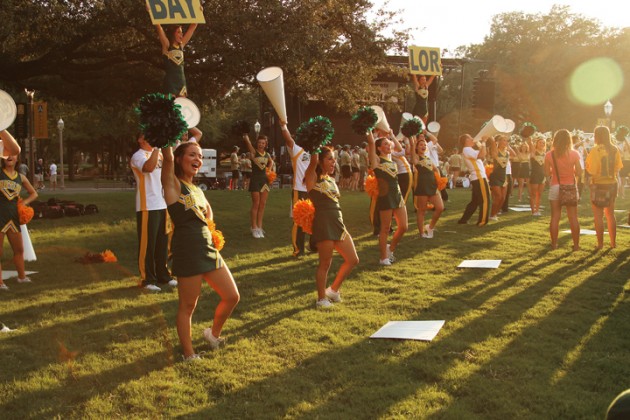By Jade Mardirosian
Staff Writer
In the current trying economic times, Baylor has continued to offer many financial aid opportunities. As a result of this and other criteria, the university has been named a “Best Value in Private Colleges” by Kiplinger’s Personal Finance magazine for 2011-2012.
The report, which ranks 100 private universities, considered factors including cost and financial aid, competitiveness, academic support, four-year graduation rates and student debt after graduation.
Baylor spokesperson Lori Fogleman said Baylor believes it brings outstanding value to its students, as measured in Kiplinger’s report.
“We see that value as the combination of cost and an outstanding academic experience,” Fogleman said. “We couple [those things] with Christian commitment and competitive financial aid packages, [and] that’s what makes Baylor a very special option for students.”
According to Baylor’s Institutional Research and Testing website, approximately 90 percent of students receive some type of financial aid from a mixture of sources; the student to faculty ratio is 14 – 1, with the average undergraduate class size of 27.
In addition, approximately 51 percent of entering freshmen graduate from Baylor within four years, and Baylor ranks in the top 10 percent of colleges and universities participating in the National Merit Scholarship program.
All of these statistics would have been factored into Baylor being ranked a best value school.
Fogleman said offering students considerable financial aid continues to be of significant importance for the university.
“It’s a priority for this university to help families who need financial aid assistance to be able to make a Baylor education a reality for their students,” Fogleman said.
The criteria considered in Kiplinger’s report weighted cost and financial aid at 31.25 percent, competitiveness at 25 percent, academic support at 12.5 percent, graduation rate at 18.75 percent and student indebtedness at 12.5 percent.
Fogleman said Baylor will be increasing its total scholarships for the 2012-2013 academic year for students by 10.6 percent or $15.9 million, to just over $165 million. Fogleman said this increase also includes a 10.6 percent increase in need-based scholarships for entering freshmen in fall 2012.
Magnolia junior Betty Jarvis said she agrees with Baylor’s addition to the list because of the effort it makes to provide students with financial support.
“Baylor does offer a lot of scholarships; I have a scholarship, and it’s not very large, but it is helpful,” Jarvis said. “And people know and recognize a degree from the university, and that’s a major aspect when you’re trying to find a job — to know that you went to a well-ranked school.”
Houston senior Ayla Francis said with the rising cost of tuition and the troubling economy, it is good to know Baylor offers a wide range of scholarships, but Baylor can continue to do more to help students.
“I think that Baylor is very expensive and the scholarships you get for doing well on your SAT’s are beneficial and encourage people to want to enroll here, but I think it would be helpful if Baylor could help even more students out with financial support, especially with the unstable economy,” Francis said.
Kiplinger’s report is available online now at https://www.kiplinger.com/reports/best-college-values.
The full report will be printed in Kiplinger’s December issue and will be available Nov. 8.



